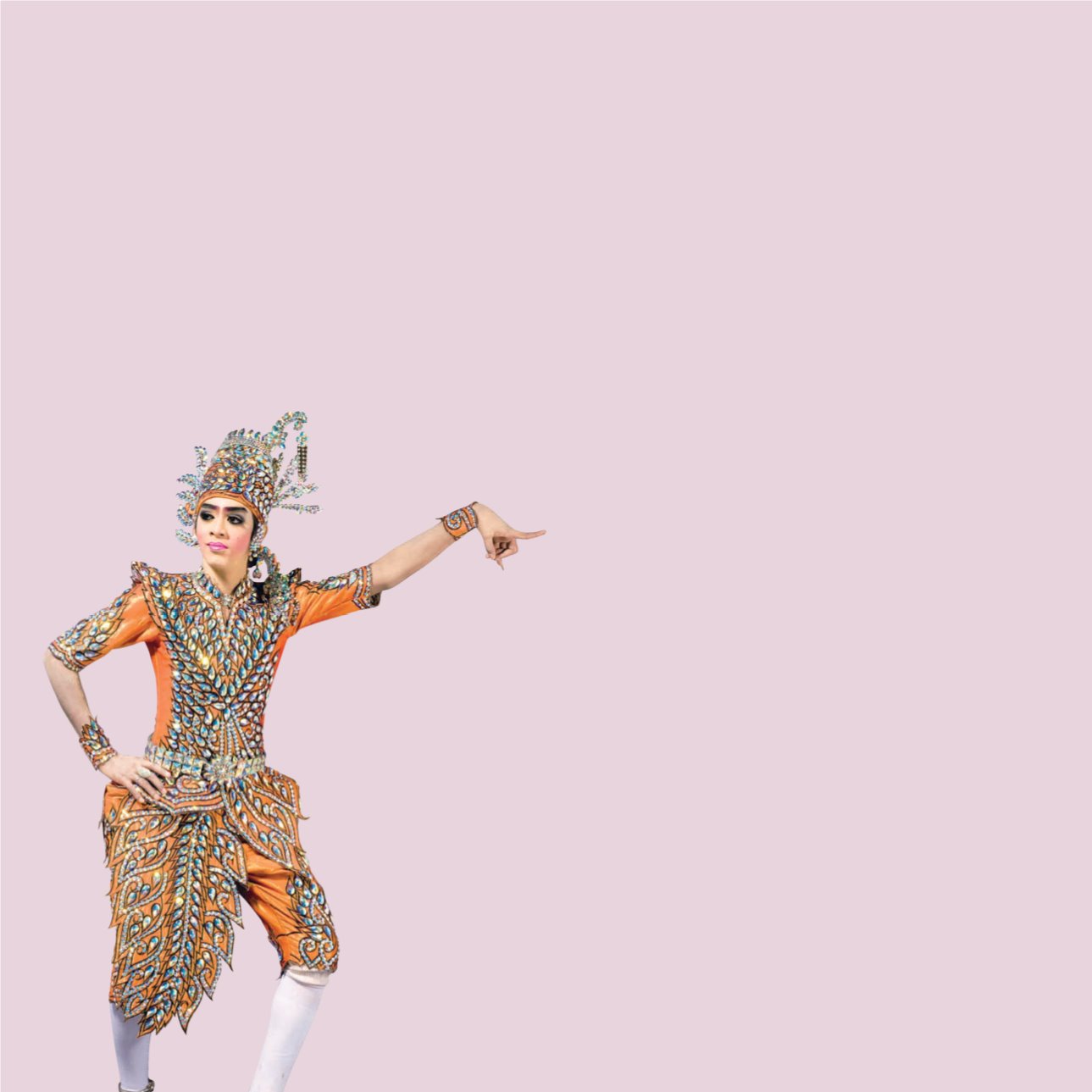

Performing Arts Spiritual Performances
|
89
Li-kae in Thailand is originated from the Islam worship chanting
with its folk music in harmony with the rhythm of Rammana (one-sided
drum with shallow body) about hundred years ago. It is developed into
a performance that combines dance with music from Pi Phat ensemble.
It proceeded in the style of folk drama that entertains audiences in each
era. It is a unique charm of Li-kae that it picks the story from social
conditions or events to present in the form of entertainment.
It is believed that the word Li-kae is derived from the Persian word
Sike, which refers to reading the praises to commemorate God Allah in
Islam. Earlier during the reign of King Rama III, Li-kae was called Li-kae
Suat Khaek, when Thai Muslims traveled from the Southern region to
settle down in Bangkok and brought the chants to God together with
Rammana performances. Later in the reign of King Rama V, the Li-kae
Suat Khaek started its performance by chanting in Malay praises to God
and singing Southern Malay verses, called Puntun or Li-kae Pantun.
Later, Li-kae brought the Pi Phat Ok Pasa (performance with mixed
languages) to tease the expatriates at that time through the satirical dress
and spoken language mixed with foreign languages. The songs started
with Malay prayers, followed by other languages including Mon, Chinese,
Laos, Burmese, Cambodian, Japanese, English, Javanese, Indian, and
Talung (Southern Thai) and ended up with a series of short comedy.
“
The costume of Li-kae’s heroine character
in the present day focuses on the luxury
of glittering embroidery, wearing a plaited
blouse and loincloth like a heroine character
of dance troupes. The heroine character
also wears white stockings and the head
decorated with white feathers like Li-kae
Song Khrueang.
”
Li-kae
The Folk Dance of Thailand


















